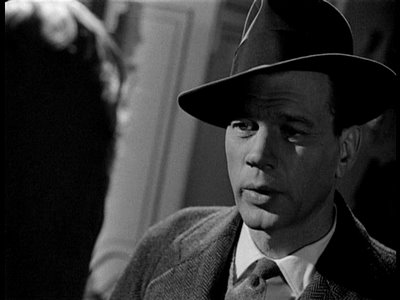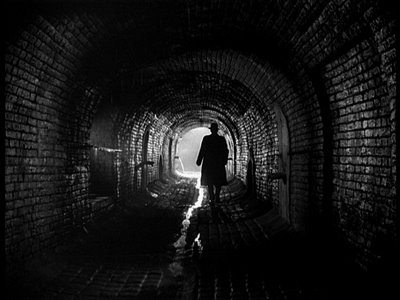The Third Man
Because the movie The Third Man was made seven years after Citizen Kane, and because it also features actor Orson Welles (the director and actor who portrayed the character Kane), critics widely acknowledge that director Carol Reed was influenced by the visual style of the earlier film. If anything, the camera work in The Third Man is better integrated into character and plot than is the case in Citizen Kane. A few of the shots in Citizen Kane seem affected by Wellesian excess. That is, the shots almost seem to be there for their own sake, a kind of cinematic "Gee whiz, if you thought that shot awhile ago was impressive, look at this one."


In The Third Man, as in the best of film noir, the lighting so expertly conveys a mood and a sense of place, the atmosphere itself almost becomes a character. Of course, not just any film noir has a Graham Greene script or the relentless zither music of The Third Man, where direction, photography, acting and score all combine for a film experience that is satisfyingly complete in a way that is unique.
After re-viewing the movie recently, I located the review of it--and specifically these comments on the photography--written by the superb film critic (and marvelous writer) Roger Ebert.
[Carol] Reed and his Academy Award-winning cinematographer, Robert Krasker, also devised a reckless, unforgettable visual style. More shots, I suspect, are tilted than are held straight; they suggest a world out of joint. There are fantastic oblique angles. Wide-angle lenses distort faces and locations. And the bizarre lighting makes the city into an expressionist nightmare.... Vienna in ``The Third Man'' is a more particular and unmistakable *place* than almost any other location in the history of the movies; the action fits the city like a hand slipping on a glove.




For another blog entry, with examples, on fine film photography, follow this link to a discussion of Days of Heaven.

0 Comments:
Post a Comment
<< Home